Sanyu was born in 1895 in China into a wealthy family, died in 1966 in Paris, is one of the leading names of modern Chinese painting. His artistic legacy is a cross-cultural between East and West.
Oct 15, 2020
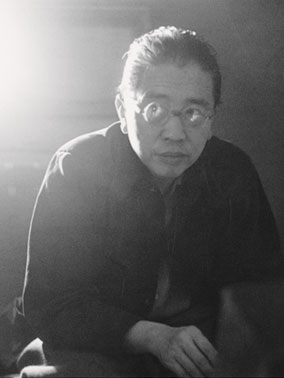
Portrait of artist Sanyu

The sale of Sanyu’s Quatre Nus at Sotheby’s salesroom in Hong Kong in July 2020. Courtesy of Sotheby’s.
At a Sotheby’s Hong Kong evening sale this past July, the late Chinese-French artist Sanyu’s 1950s masterwork Quatre Nus sold for HK$258.3 million (US$33.3 million), catapulting the work into the artist’s top two results at auction. It trails only Cinq nus (ca. 1950–59), which sold at Christie’s last year for HK$303.9 million (US$38.8 million). Those results have helped enshrine Sanyu as a household name at auction.
At a Sotheby’s sale in Hong Kong earlier this month, two knockout paintings by Sanyu brought in a combined $45.8 million—accounting for nearly half of the auction total take. Fleurs Dans Un Pot Bleu Et Blanc (1950) and Nu (ca. 1950-1960), became the fifth- and sixth-highest auction results for the artist’s work, selling for HK$187 million (US$24.1 million) and HK$168.6 million (US$21.7 million) respectively. These exceptional prices are indicative not only of Sanyu’s increasing market dominance, but of an ascendant artistic legacy that is now crossing over into global consciousness.
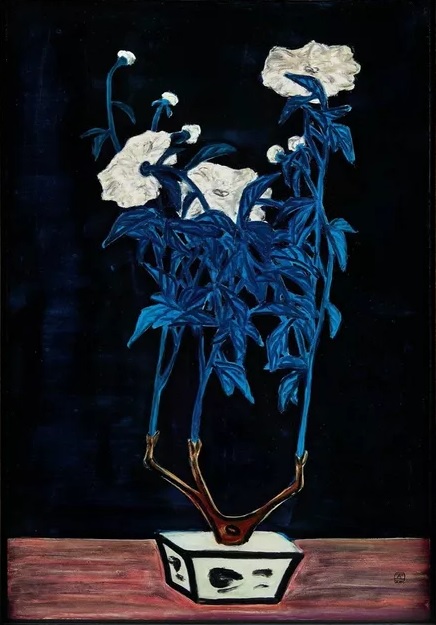
Sanyu, Fleurs dans un pot bleu et blanc, 1950s. Courtesy of Sotheby’s.
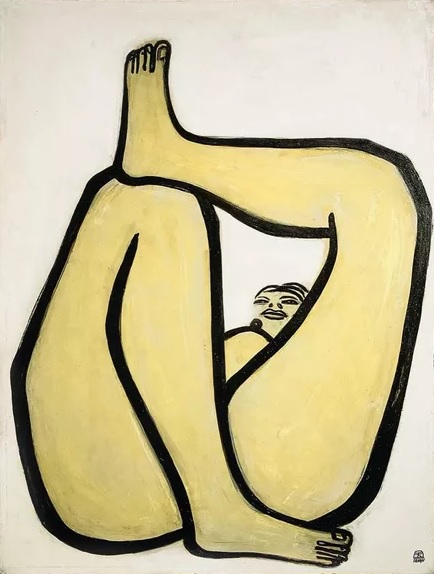
Sanyu, Nu, 1945. Courtesy of Sotheby’s.
Born Chang Yu into a wealthy family in Sichuan, China, in 1901, Sanyu was first introduced to modern painting after he moved to Japan in 1918. Shortly thereafter, he decided to follow the artistic movement of the day to its source, and in the early 1920s, he arrived in Paris with a number of fellow Chinese students in search of inspiration. It was there that Sanyu would come to develop his signature style—an elegant, flowing figuration that combined strains of Chinese calligraphy and still lifes with Fauvist palettes and forms that would lead many to dub the artist the “Chinese Matisse.”
The cross-cultural nature of Sanyu’s career is the driving force behind his newly blue-chip status. His deft mixing of Chinese and European painting styles led to interest early on from a variety of patrons including the French dealer Henri-Pierre Roché, the Dutch composer Johan Franco, and the photographer Robert Frank. Despite this, Sanyu never found much commercial success during his lifetime. In the years leading up to his death in Paris in 1966, he lived more or less in poverty, having refused offers to buy his paintings or promote his work for years. His output had nearly fallen into obscurity, but by the 1990s, his distinctive style had begun to resonate with collectors once again, particularly among the growing ranks of Asian collectors.
“In Asia, understanding and collections of art have grown dramatically over the past few decades,” said David Lin, director of Lin & Lin Gallery, who began showing Sanyu’s work in the early 1990s as part of Lin & Keng Gallery in Taipei. “As one of the most important Chinese modern artists, Sanyu is certainly the focus of attention.”
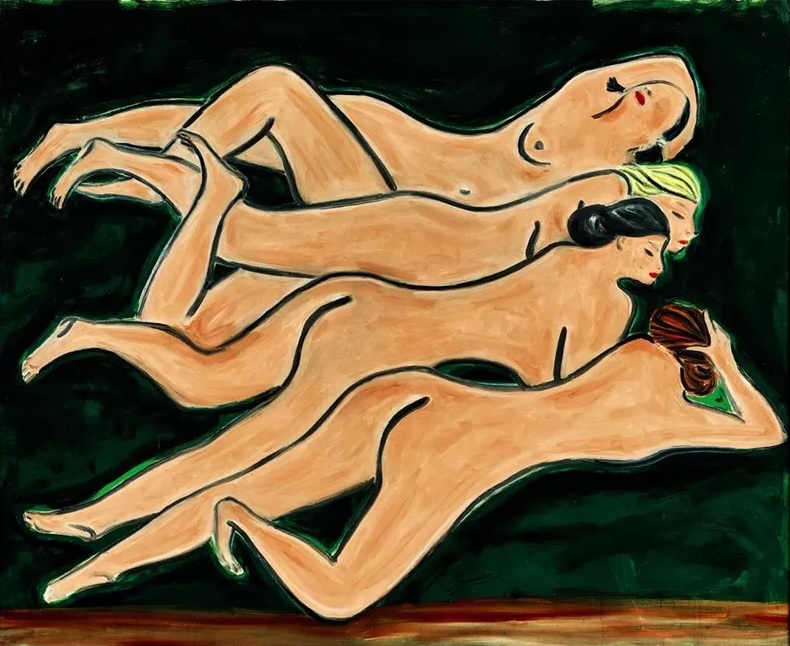
Sanyu, Quatre Nus, 1950s. Courtesy of Sotheby’s.
The foundation for that wider public attention can be traced back to a 1988 exhibition at the Taipei Fine Arts Museum highlighting the connections between Paris and China, which focused on Sanyu in particular. In the wake of that exhibition’s success, dealers and auction houses in the region began to capitalize on the artist’s growing popularity. During the same era when Lin & Keng Gallery began showing Sanyu’s works, they also made their first appearance on the secondary market, when Sotheby’s Hong Kong sold three Sanyu paintings, including Bouquet de marguerites (1930) for HK$834,000 (US$107,000). Even in their earliest auction appearances, the painter’s works commanded high prices.
In 1995, Sotheby’s brought 21 Sanyu works from the collection of Johan Franco to auction in Taiwan, shifting the artist’s already ascendant market into a higher gear. All of the works exceeded their high estimates, with many achieving double their listed price. Felix Kwok, Sotheby’s head of sales for modern and Asian art in Hong Kong, pointed to this sale and a private sale of Robert Frank’s Sanyu collection in 1997 as particular market catalysts.
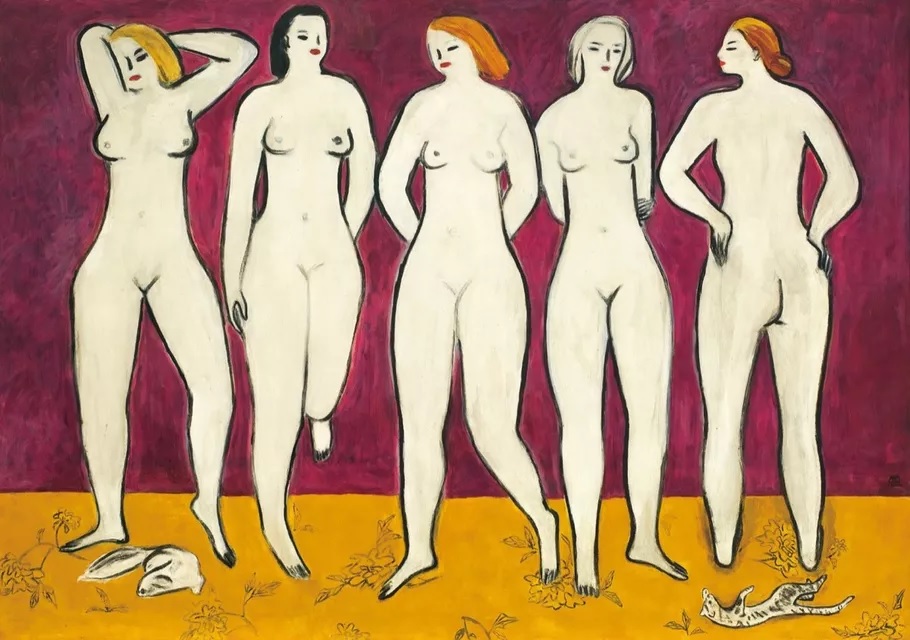
Sanyu, Cinq nus, ca. 1955. Courtesy of Christie’s Images Ltd.
“Both collections were highly important with impeccable provenance, and both were very well received by collectors in Asia, achieving great results,” Kwok said. He pointed to Sanyu’s participation in the heralded Paris art scene of the first half of the 20th century as an important aspect of his posthumous popularity. “As the only modern Chinese pioneer who took part in the École de Paris since the 1920s, Sanyu’s paintings are very sought after by important collectors, and have become the engine of growth for the modern art market in Asia,” he explained.
The cross-cultural pollination of Sanyu’s success continued into the new millennium, when the Guimet Museum in Paris put on the retrospective “Sanyu: Language of the Body” in 2004, which raised the artist’s profile in Europe. At the same time, his paintings continued to appear at auctions, mostly in Hong Kong, fetching higher and higher prices. Standout results include the late-career masterwork Reclining Nude (ca. 1950s–60s), which sold at a Christie’s Hong Kong sale in 2004 for HK$7.3 million (US$943,500).
The artist’s work wouldn’t break the US$1-million mark until the following year, however, when Quatre Nus (ca. 1950–59) sold for HK$16.3 million (US$2.1 million) at Christie’s Hong Kong. This is the same Quatre Nus that sold at Sotheby’s this past July for $33.3 million—an increase of nearly 1,500 percent over 15 years. The record-holding Cinq nus has had a similarly illustrative secondary market trajectory. It was previously offered in 2011 during a Hong Kong sale held by the auction house Ravenel, where it sold for HK$128.3 million (US$16.4 million)—a record for Sanyu at the time, and still the fifth-highest auction result ever for his work. But when it reappeared at auction with Christie’s last November, just over eight years later, its value more than doubled.
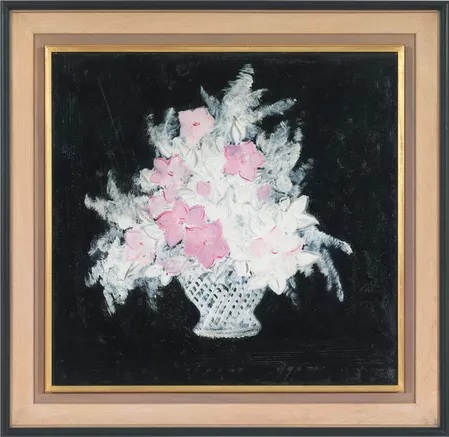
Sanyu. Basket of Flowers, 1931. Gagosian.
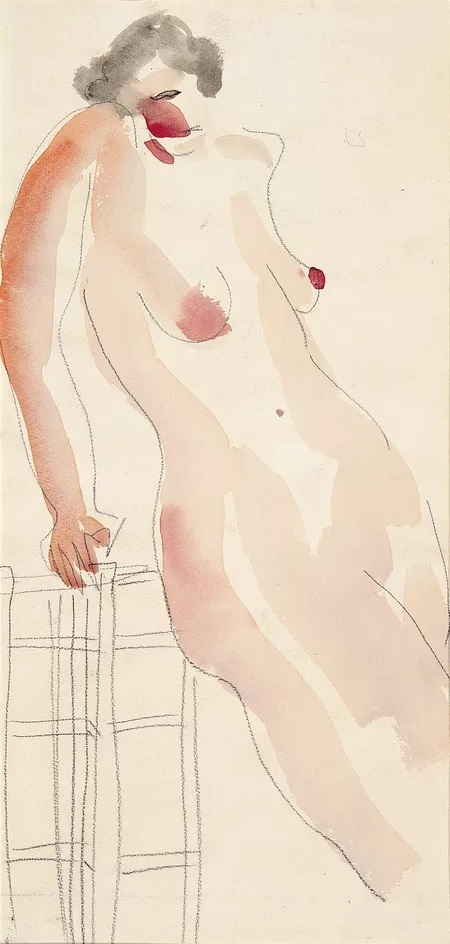
Sanyu. A Nude Lady lay on a chair. Lin & Lin Gallery.
The subject matter of these canvases is indicative of what may be Sanyu’s most sought-after works: his oil paintings of nudes. “Paintings by Sanyu depicting a group of female nudes rarely appear on the market, not least those on a grand scale,” Kwok said. “Sanyu’s early female nude paintings tended to feature a single figure, while his later creations depicting a group of nudes marked a breakthrough in composition, style, and the use of perspective.” Those later group nudes seem to be especially prized by collectors, explaining why many of the artist’s top auction results are for works from the 1950s and onward.
Of Sanyu’s top 10 most expensive auction lots, however, only half are nudes. The rest feature the artist’s other most distinctive motif: still-life renderings of flowers. Works such as Chrysanthèmes blanches dans un pot bleu et blanc (ca. 1940–59), which sold at Christie’s Hong Kong this past July for HK$191.6 million (US$24.7 million), illustrate Sanyu’s elegant gestural work and Fauvist color choices. Several flower paintings of its ilk figure among the artist’s top auction lots.
The artist’s most recent market surge can again be traced to institutional shows rooted in international exchange. In 2014, the Hong Kong Museum of Art and a number of Parisian museums collaborated on the group exhibition “Paris · Chinese Painting: Legacy of the 20th Century Chinese Masters,” which featured Sanyu as well as contemporaries like Xu Beihong and Lin Fengmian. In 2017, the National Museum of History in Taipei put on “Parisian Nostalgia — The National Museum of History’s Sanyu Collection.”
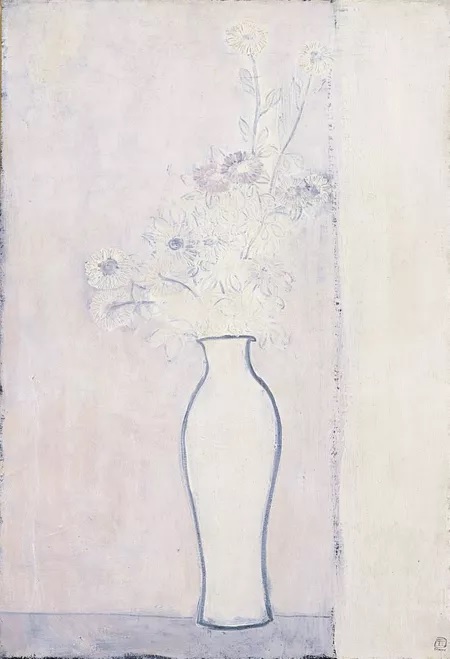
Sanyu. Chrysanthemums in a White Vase, 1930. Asia University Museum of Modern Art.

Sanyu. White Roses, ca. 1930. Gagosian.
In the years since, Sanyu’s market has gone up another notch, with his top six auction prices being achieved in the last two years alone. Artsy data reflects this trend, showing a significant uptick in demand for Sanyu’s work on the platform beginning in 2018, when inquiries on his works rose more than 650 percent from the previous year. According to Kwok, Sanyu’s appeal is growing outside of his historical market strongholds of China, France, and Taiwan, and expanding further into Europe and the Americas as well. That expansion, combined with the growing buying power of Asian collectors, seems poised to push the artist’s market further into the stratosphere.
“To set a new benchmark for Sanyu across two consecutive seasons at Sotheby’s Hong Kong is a measure of the artist’s stature among collectors,” said Kwok. “With interest in the artist at an all-time high, we expect his market to continue to thrive on a global scale.”
Lin, meanwhile, is particularly hopeful that Sanyu’s stature will continue to increase in his native China, noting, “We believe that the market of Sanyu’s works is going to have more space for development.”
Source: Artsy, website Sanyu







